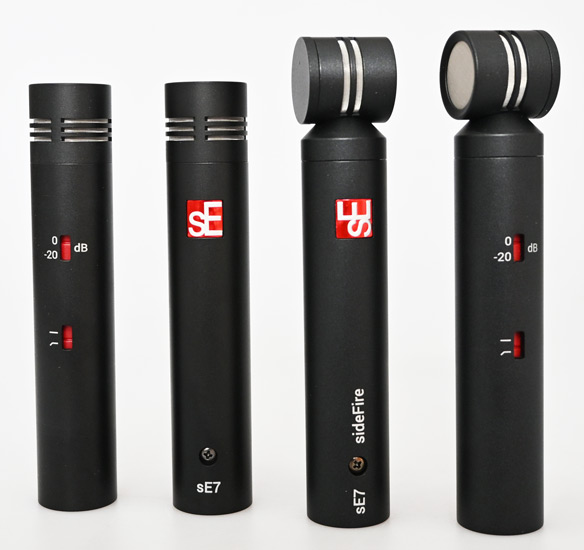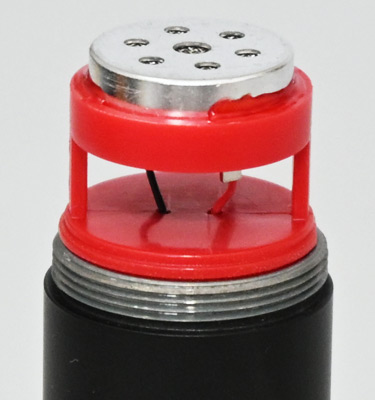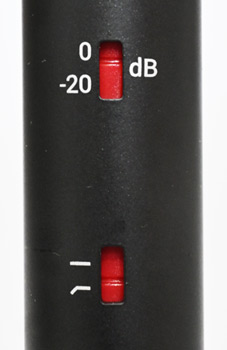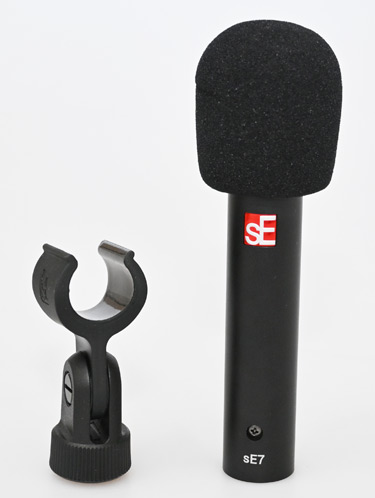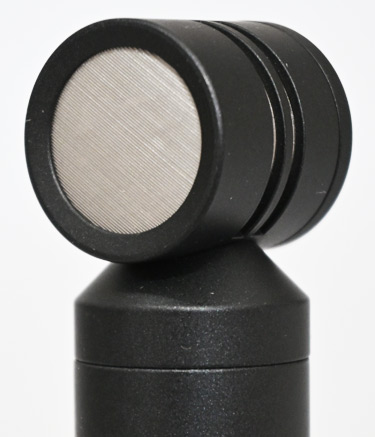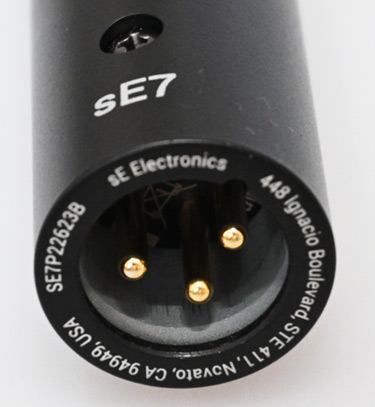sE Electronics sE7 & sE7 sideFire
Small diaphragm condenser microphone with different capsule configurations
Author: Christian Boche | Photos: Peter Kaminski and Christian Boche (2)
sE Electronics has recently focused extensively on innovative microphone solutions for versatile recording situations. The sE7 series is already a successful family of small-diaphragm condenser microphones that can be used flexibly. The manufacturer is now adding the sE7 sideFire, a variant with a side capsule arrangement that is particularly suitable for special applications thanks to its unique design. We had the opportunity to test the stereo sets of both variants.
Concept
The classic sE7 features the proven front capsule arrangement with cardioid characteristics. The back electret condenser capsule is axially aligned, allowing for traditional front-of-speaker positioning. This arrangement is ideal for standard microphone applications, such as instrument recording, vocal recording, and classic stereo techniques.
The side capsule arrangement of the sideFire (see illustration above) uses the same back electret condenser capsule as the standard model, but rotated by 90 degrees. The directional characteristic remains cardioid, but the side speech direction makes completely new positioning possible.
The microphones are available individually or as a stereo set consisting of two factory-matched microphones. Both sE7 variants are equipped with the same back-electret condenser capsule. The directional characteristic is cardioid. Amplification happens through transformerless electronics.
Two slide switches allow the sE7 microphones to be flexibly adapted to the application. If required, a low-cut filter can be activated at 80Hz via a recessed switch. However, with 6 dB/octave, its slope is very moderate. A pre-attenuation (PAD) switch is also available, producing an attenuation of -20dB. This allows the sE7 microphones to be used even with very loud sources. These features enable the user to respond quickly and easily to different applications. For most applications, such as instrumental microphones, recording acoustic instruments, or stereo overheads, the default settings should be the right choice.
Design and technical data
The sE7 microphones feature a high-quality black metal housing that has been meticulously crafted. The XLR connector with gold-plated contacts is located at the rear. The protective grille of the side-mounted capsule is made of fine-mesh metal and appears to be very sturdy. The microphone clamp is firmly attached to the housing and provides a secure hold. The housing is robustly constructed and should withstand rough touring conditions over the long term.
The sE7 sideFire is 130mm long and has a diameter of 22mm. Each microphone weighs 163 grams. The se7 Standard version is slightly lighter and more compact, with a length of 120mm and a weight of 128 grams. The scope of delivery includes the operating instructions, a microphone clamp with a reduction thread, and a foam windshield. The stereo sets come with double accessories.
The manufacturer specifies the frequency range as 20Hz to 20kHz. According to the frequency response curve, the frequency range is largely linear, with a slight rise in the upper midrange around 8kHz, which should ensure presence and detail. The maximum sound pressure level is specified as an impressive 156dB SPL (with the pad switch activated). According to the data sheet, the sensitivity is 19mV/Pa (-34.5dBV). The impedance is 200 ohms.
Both versions impress with their high-quality black metal housing and meticulously clean workmanship. The XLR connectors feature gold-plated contacts, and the protective grilles are made of fine-mesh metal.
The microphone clamps included with both sets are particularly noteworthy: Not only do they come with matching reduction threads for microphone stands, but they also hold the microphones rock-solid. Vibrations or rough transport on festival roll risers do not affect their stability.
Overhead recordings on drums
In classic overhead positions, the standard sE7 shows its strengths in the usual microphone setup. The front orientation allows for precise positioning above the kit with direct sound pickup.
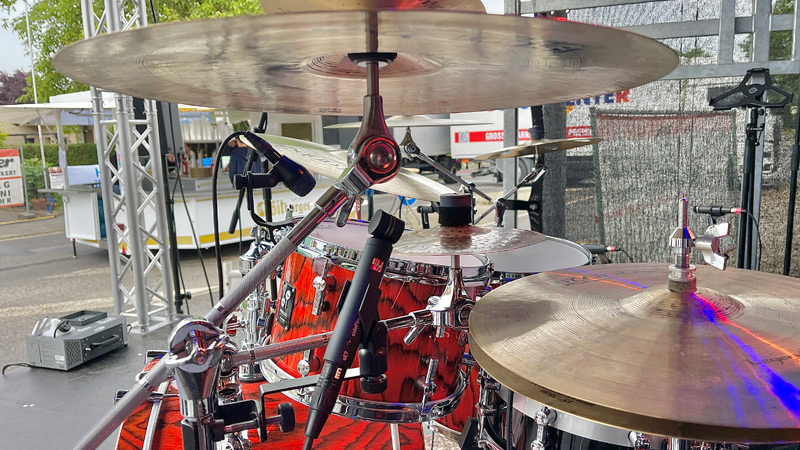
The sE7 sideFire variant also offers interesting options for drum sets. The side capsule arrangement allows the microphones to be optimally positioned - even in confined spaces. When mixing a support act on a local stage, the unusual capsule orientation allows for interesting positioning options.
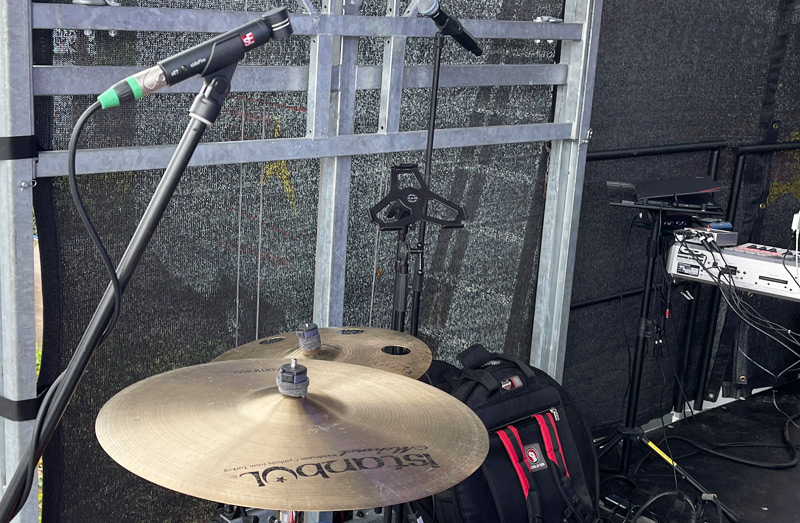
The neutral setting already delivered very good results with balanced imaging. The fast transient response accurately captures the attack phases of the cymbals. A Behringer WING Compact was used as the mixing console. I didn't need the built-in PAD switch for this application. This is probably only necessary when miking very loud sound sources (e.g., rock snare) at close range.
Choir recording
During the test period, an unexpected order for choir sound reinforcement came in. A total of seven choirs had to be recorded, which I was able to cover with the two stereo sets. It was very windy that day, so the included windshields were also used. With the windshields attached, however, it is not immediately apparent with the sideFire version where the capsule's direction of speech is located. This led to two instances where attentive choir members wanted to help with aligning the two Sidefire sE7s in the same way as the conventional sE7s. Fortunately, the attentive choir director intervened in time. The sound quality was flawless. I particularly like the high coupling resistance of the microphones - even without drastic EQ adjustments, which in turn speaks for their universal applicability.
Acoustic guitar
The sE7 Standard offers proven front miking with natural sound reproduction for guitar recording, making it ideal for classic setups with sufficient space. The sideFire variant, on the other hand, allows for discreet close-up recordings without the microphone interfering. This is particularly advantageous for live recordings or when visual inconspicuousness is required.
Grand piano/upright piano
Both versions offer advantages and disadvantages in this field. The standard set is recommended for classic stereo miking above the strings using proven techniques such as A/B or ORTF. As a proven stereo set, the sideFire microphones can be positioned discreetly above the strings of the instruments, which also offers clear advantages for visual reasons (e.g., film recordings). The side orientation allows for inconspicuous placement.
In practice
The sE7 sideFire shows its greatest advantages in confined spaces. Whereas the standard sE7 might have space problems due to its frontal orientation, the side capsule opens up new possibilities. With the PAD switch activated, both versions can withstand very high sound pressure levels. The sideFire offers additional flexibility in positioning. Both microphone versions feature the same technology and the same capsule, so it goes without saying that no differences in sound are to be expected. This is also evident in practice. The sE7 microphones feature a subtle, focused treble boost, giving them a fresh, modern sound without being intrusive.
Conclusion
With the sE7 sideFire Stereo Set, sE Electronics expands its portfolio with a highly versatile small-diaphragm condenser microphone that perfectly complements the proven standard sE7. While both microphones offer the same high sound quality, the side capsule arrangement of the sideFire opens up completely new possibilities in microphone placement. The standard sE7 remains the first choice for classic applications where proven techniques are required. The sideFire, on the other hand, is the ideal solution for innovative approaches, tight spaces, and situations where visual restraint is desired.
The standard sE7 costs 120 Euro or 240 Euro as a stereo set, while the sE7 sideFire costs 150 Euro or 280 Euro as a stereo set. Combined with the excellent, robust design of both versions and the factory-set stereo pairing, both the sE7 Standard and the sE7 sideFire are definitely worth recommending, especially when you consider the price. You get a lot of quality for very little money.
 How to resolve AdBlock issue?
How to resolve AdBlock issue? 